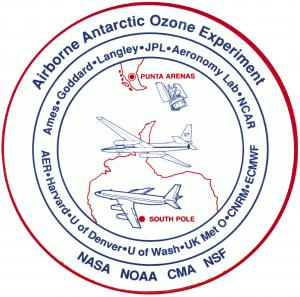Airborne Antarctic Ozone Experiment

Disciplines: Field Campaigns
AAOE Mission Publications
Loewenstein M, Posolske J R, and Strahan S E (1990). ATLAS instrument characterization: Accuracy of the AASE and AAOE nitrous oxide data sets. Geophysical Research Letters, 17 (4), 481. https://doi.org/10.1029/GL017i004p00481
Ko M K W, Rodriguez J M, Sze N D, Proffitt M H, Starr W L, Krueger A, Browell E V, and McCormick M P (1989). Implications of AAOE observations for proposed chemical explanations of the seasonal and internal behavior of Antarctic ozone. Journal of Geophysical Research: Atmospheres, 94 (D14), 16705. https://doi.org/10.1029/JD094iD14p16705
Tuck A F, Watson R T, Condon E P, Margitan J J and Toon O B (1989). The planning and execution of ER-2 and DC-8 aircraft flights over Antarctica, August and September 1987. Journal of Geophysical Research: Atmospheres, 94 (D9), 11181. https://doi.org/10.1029/JD094iD09p11181
Jones R L, Austin J, McKenna D S, Anderson J G, Fahey D W, Farmer C B, Heidt L E, Kelly K K, Murphy S M, Proffitt M H, Tuck A F, and Vedder J F (1989). Lagrangian photochemical modeling studies of the 1987 Antarctic spring vortex: 1. Comparison with AAOE observations. Journal of Geophysical Research: Atmospheres, 94 (D9), 11529. https://doi.org/10.1029/JD094iD09p11529
Chan K R, Scott S G, Bui T P, Bowen S W, and Day J (1989). Temperature and horizontal wind measurements on the ER-2 aircraft during the 1987 Airborne Antarctic Ozone Experiment. Journal of Geophysical Research: Atmospheres, 94 (D9), 11573. https://doi.org/10.1029/JD094iD09p11573